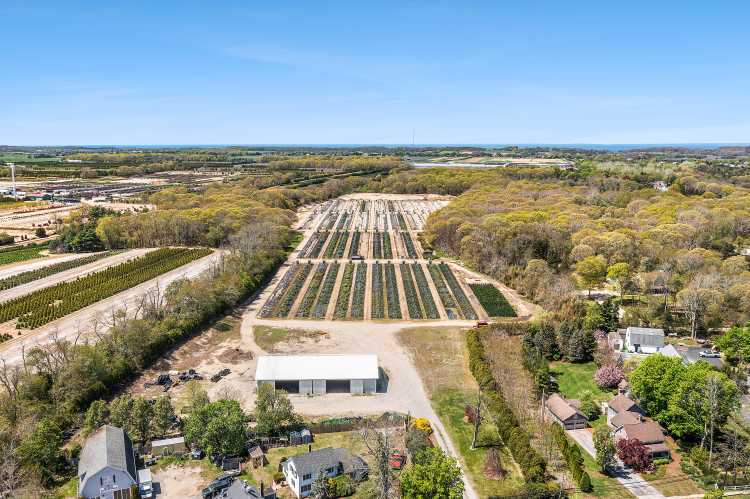What About Young Families?
Over the years, I have written about the need to keep young people on Long Island and have brainstormed with other young professionals on how we can get more of our peers to stay; I’ve heard from elected leaders on the alleged “brain drain” problem, and heard the plight of companies who can’t find and keep talent on Long Island, because many of the best have been smart enough to move from Long Island to a region where they can afford to live.
During that time, I assumed that older generations of Long Islanders shared this concern. I thought they understood that a rapidly changing population is completely unsustainable, and it meant that they would be picking up our tax tab while we move to greener pastures.
Not until this week did I realize I was wrong. At a public meeting of the Island Trees School District, I learned that a brutal and overwhelming majority seemed to not only support increases in taxes, but vehemently reject any proposal that could even potentially bring in young professionals and their children.
The district, like many others, has proposed a solution to the problem of paying to maintain empty buildings due to decreased enrollment—50 percent that of 1963. They are proposing to move the library back to its former home in the middle school, and sell the current library building and another unused building to a developer to build senior housing. The message from the packed auditorium was clear: More families mean more children, which are a threat.
Not until this week did I even consider that I could be one of those people that leave Long Island. This momentary reconsideration had nothing to do with being booed and told to move out of town, but everything to do with the disgust and complete shock coming from learning that I was the only person in a room full of 500 people that were concerned with the long-term sustainability of our district, our budget, our taxes.
Although I can’t say this definitively, judging from the dozens of others who expressed their opinions with disguised coughs, audible groans and even some not-so-discreet belligerent yelling, I would say a strong majority were not in my camp.
Wondering what is so horrible about senior housing and a library relocation? A guerilla Q&A sheet placed at the welcome table spelled out their fears pretty clearly. The three main concerns echoed all night:
First, that senior housing will increase traffic and crime in the area. Anyone who graduated from the district in the last decade knows that broken beer bottles, used syringes and drug baggies litter the fields of the unused schools.
Second, that a middle school is no place for a public library, as students will be forced to walk past homeless and pedophiles that populate it. Growing up in Island Trees, I don’t recall meeting any homeless when I went to the library for Saturday morning book readings.
Lastly, that the proposed development will cause an increase in school-aged children. In addition, they’re concerned that when seniors move into these condos, younger families could move into their homes when they sell them, bringing even more children into the district.
This “True” Q&A sheet also estimated the development would account for 50 extra students, which would yield an annual increase of $1 million dollars in education costs. However, based on the population and budget history of the district, this assumption is simply not the case.
In 1963, the Island Trees School district housed 5,852 students, administration offices, and a library in six buildings. In 2013, although the district had the same amount, or slightly more homes, the district shrunk by half, educating 2,490 students. Census demographics show a clear projected downward trend in age in our town, with a sharp dip in the 20-24 and 25-30 age brackets.
Despite the decrease in population, the budget has continued to rise. In 2008, the annual cost per student was $18,138. This year it is more than $23,000 per student. This is because the budget hinges heavily on things like maintenance, teacher salaries and pensions, utility bills, supplies, etc. Even if new students were to enter the district, it would be incorrect to say that it would cost taxpayers an additional $23,000 per student.
I originally went to the hearing with the goal of convincing the board and the community to allow the proposed development to be open for people of all ages… not just senior citizens. I learned that was I was shooting for the moon, and that there was no chance the community would pass a referendum that allowed young professionals to move into their neighborhood. What I heard was a big “no” to consolidation and efficiency, “no” to affordable housing options to retain their graduates, and “yes” to hundreds of thousands of dollars wasted on unused properties while after-school programs, music and sports are cut.
I understand parents are concerned about the safety of their children, but it is not okay to keep a closed mind and form opinion based on lies and rumors.
I ask the Board of Eduction to slow down and be more transparent. To look at all of the options and provide the community with pros and cons of each. I also ask the parents of the district to calm down and learn more about the development process, knowing that nothing will happen overnight. And for the love of books, don’t discriminate against young people who want to buy your houses one day.
Tara Bono is an Island Trees resident and 2005 graduate of Island Trees High School. She works as marketing manager of EmPower Solar, an Island Park based solar installation company. Email: tbono6@gmail.com.













